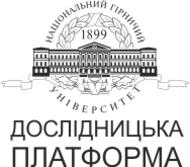№78-9
Hydrodynamic regime modelingof the tailing dump to justify the selection of the proposed construction site
V. Tymoshchuk1, Y. Tymoshchuk1, D. Sinkevych1
1Dnipro University of Technology, Dnipro, Ukraine
Coll.res.pap.nat.min.univ. 2024, 78:101–111
Full text (PDF)
https://doi.org/10.33271/crpnmu/78.101
ABSTRACT
The aim of the study is to predict the hydrodynamic regime of the proposed tailing dump at the East-Valyavka iron ore deposit to justify the selection of its construction site.
Research methods.To predict the hydrodynamic regime and estimate filtration losses from the tailing dump, a numerical geofiltration model was developed in the Visual MODFLOW software package, which simulates a three-dimensional groundwater flow of constant density in a porous medium. The forecasting methodology involved a series of filtration and water-balance calculations, with a comparative assessment of changes in the hydrodynamic regime at the construction site based on alternative location options for the proposed tailing dump.
Results of the study. Using the method of mathematical modeling, a forecast of changes in the hydrodynamic regime of groundwater at the construction site was developed and an assessment of filtration losses from the designed tailing dump for its location options was performed. Based on the analysis of the balance components of the numerical model, the nature of groundwater supply and discharge was determined and the parameters of their hydrodynamic connection with surface water were established. Based on the modeling results, the choice of a hydrodynamically feasible tailing dump location was substantiated and measures to reduce filtration losses were identified.
Novelty. Based on the results of mathematical modeling, the paper establishes the dependence of the hydrodynamic regime of the designed tailing dump on the conditions of groundwater supply and discharge at the construction site, their connection with the regime of accumulated surface water within the existing hydraulic structures and the peculiarities of the geological and hydrogeological structure of the studied area in accordance with the options for the location of the hydraulic structure.
Practical significance of the results. The modeling results and estimates presented in this paper can be used to substantiate the projects for the construction of hydraulic structures in complex geological and hydrogeological conditions.
Keywords: tailing dump, hydrodynamic regime, geofiltration model, mathematical modeling.
References
1. Tymoshchuk V.I. (2019). Otsinka hidroheomekhanichnoi stiikosti hidrotekhnichnykh sporud na osnovi danykh pro rozridzhennia gruntiv v umovakh mozhlyvykh seismichnykh vplyviv. Materialy naukovo-tekhnichnoi konferentsii. TOV «Fundamentstroimaks», 31–32.
2. Tymoshchuk, V.I., & Sherstiuk, Ye.A. (2022). Kompleksna otsinka stanu hidrotekhnichnykh sporud Ladyzhynskoi TES u zv’iazku z yikh rekonstruktsiieiu. Zbirnyk naukovykh prats NHU, 69, 120–132. https://doi.org/10.33271/crpnmu/69.120
3. Tymoshchuk, V.I., & Tymoshchuk, Ye.V. (2023). Matematychne modeliuvannia heomekhanichnoho stanu tekhnohennoho porodnoho masyvu v umovakh dii seismichnoho navantazhennia. Zbirnyk naukovykh prats NHU, 74, 163–179. https://doi.org/10.33271/crpnmu/74.163
4. Kinzelbach, W. (1986). Groundwatermodeling. Amsterdam: Elsevier.
5. McDonald, M. G., & Harbaugh, A. W. (1984). A modular three-dimensional finite-difference ground-water flow model. Open-File Report. https://doi.org/10.3133/ofr83875
6. McWhorter, D.B., Sunada, D.K., & Sunada, D.K. (1977). Ground-water hydrology and hydraulics. Water Resources Publication.




